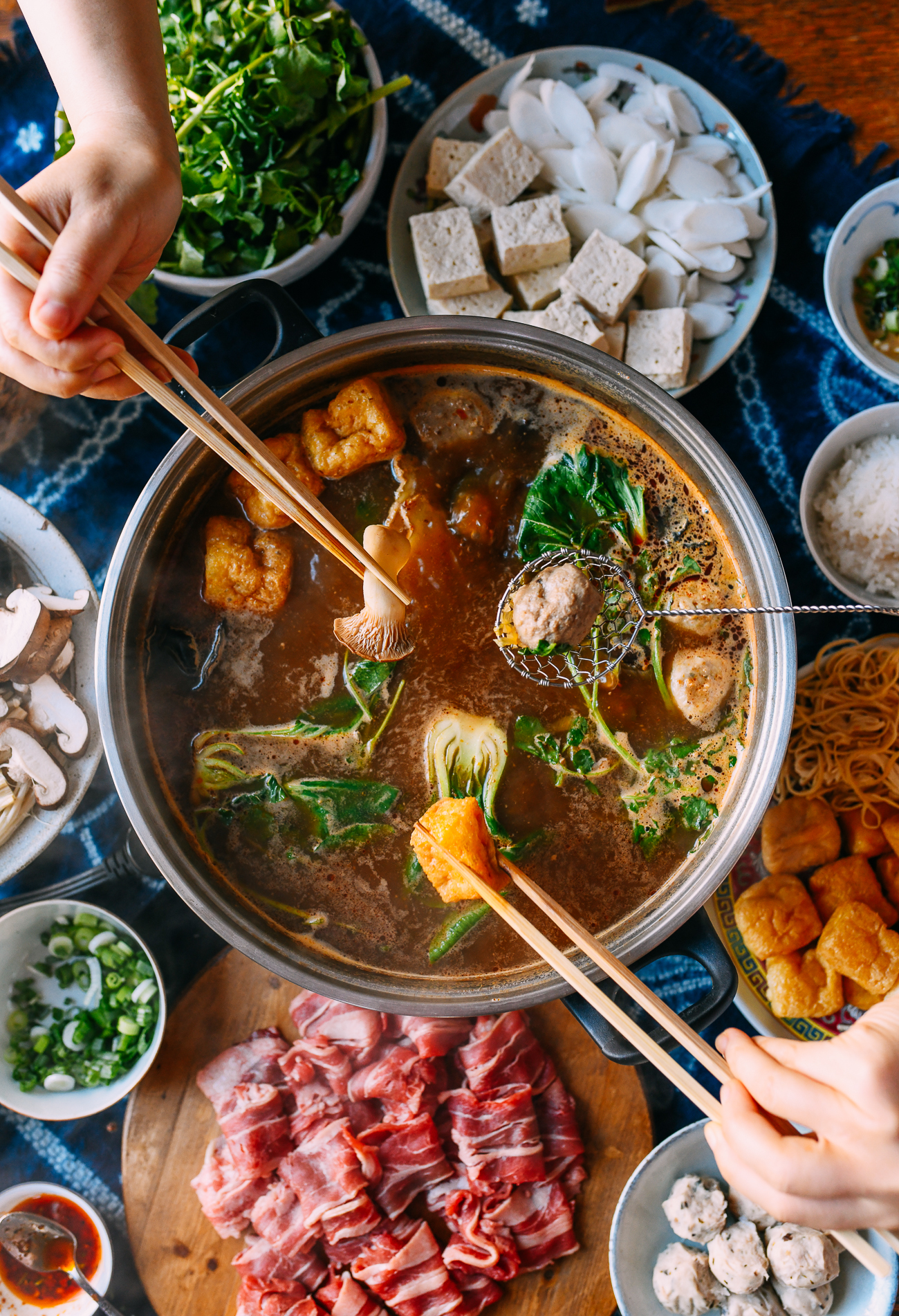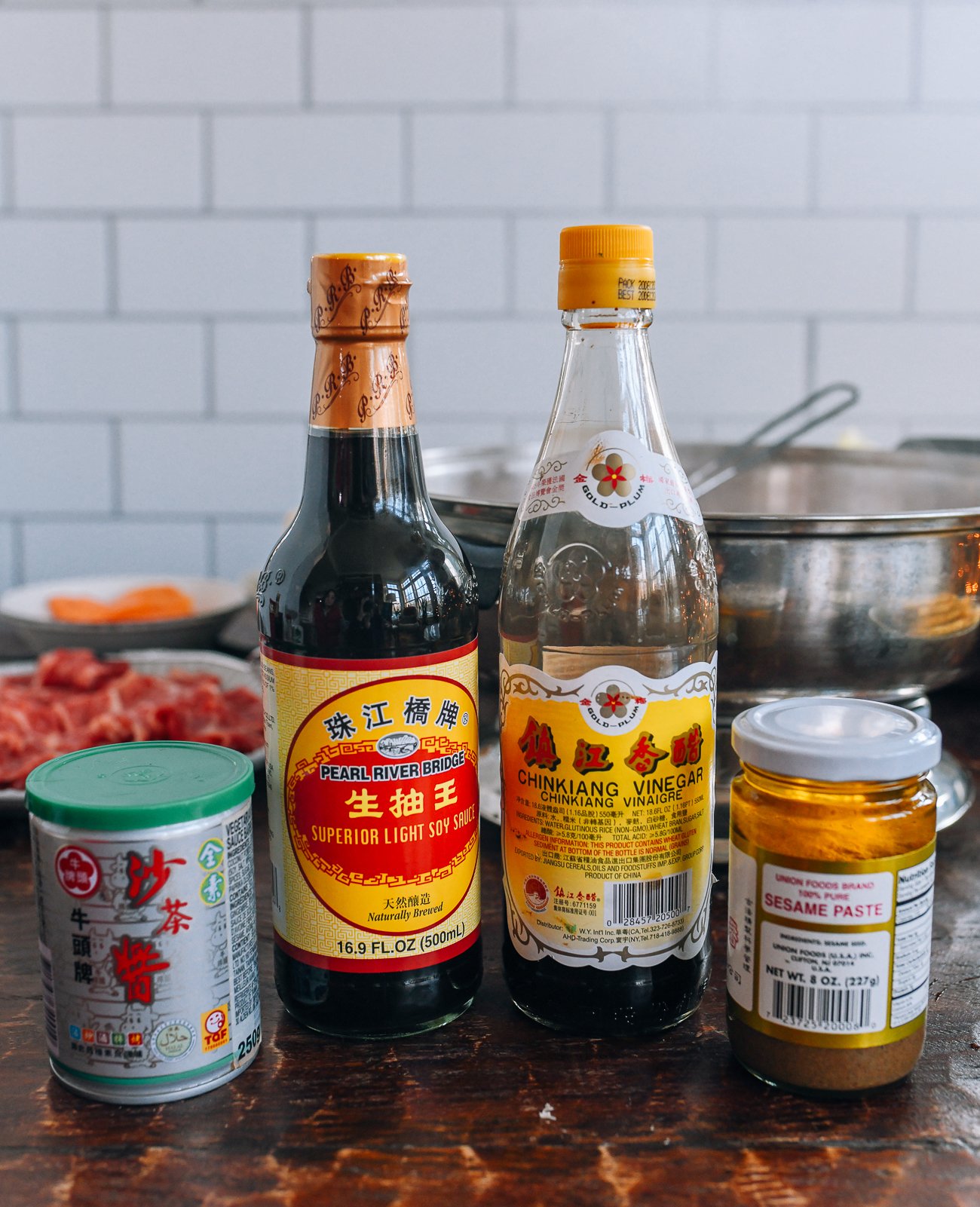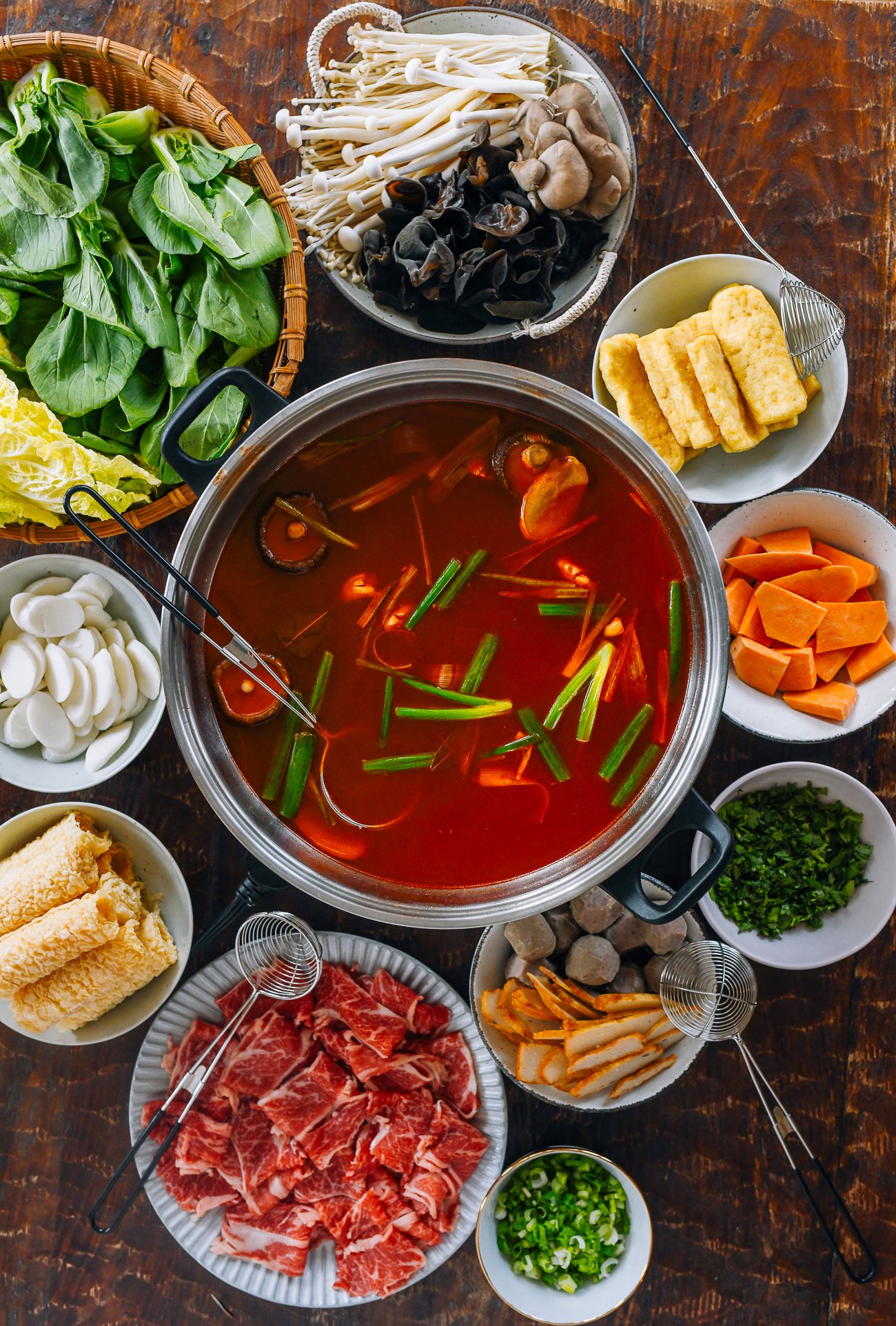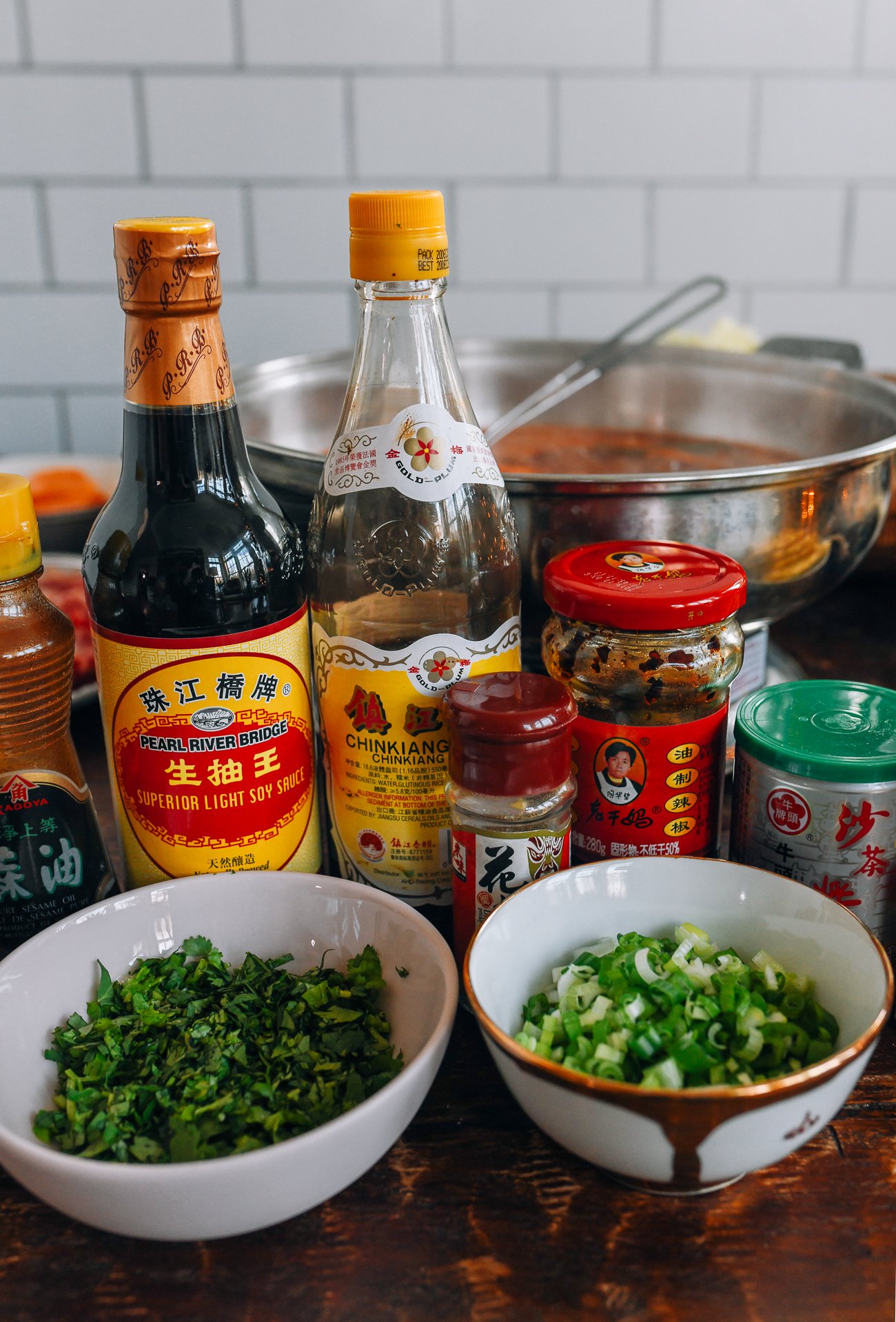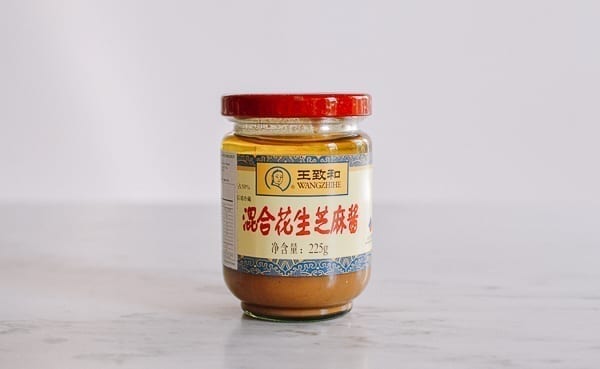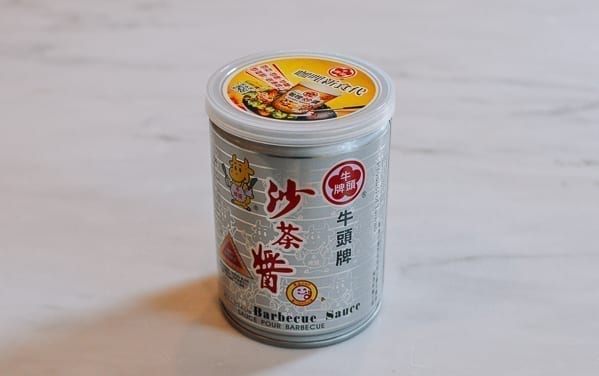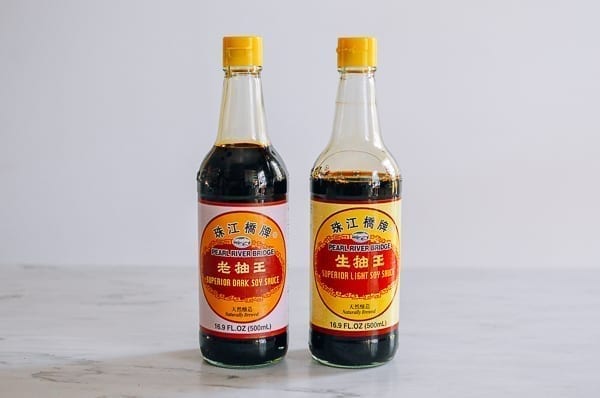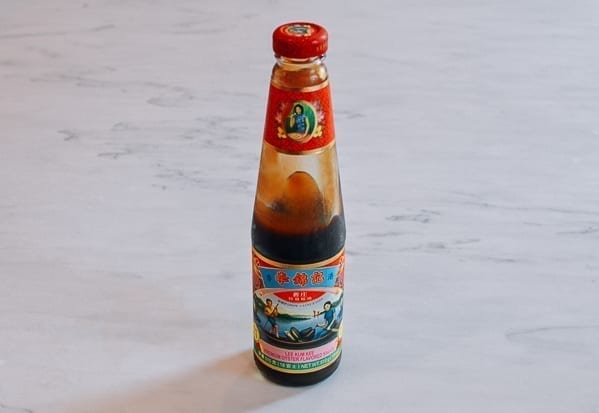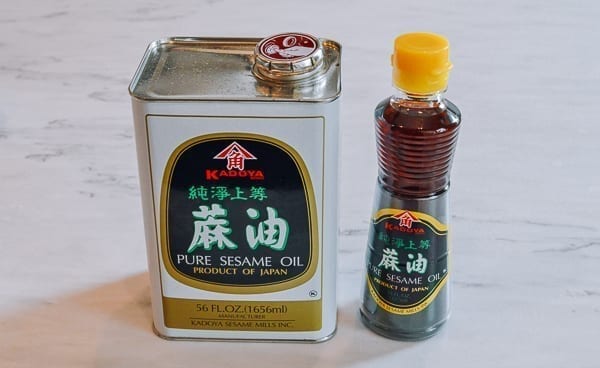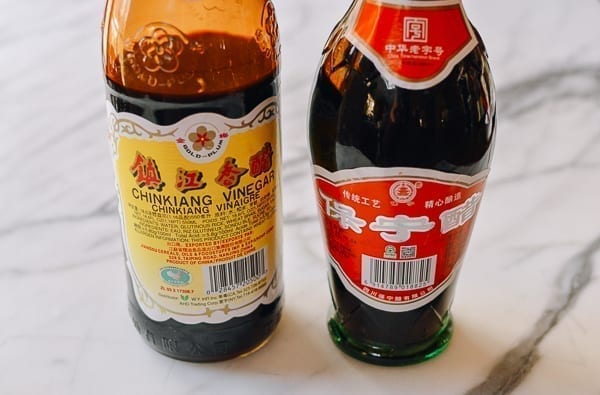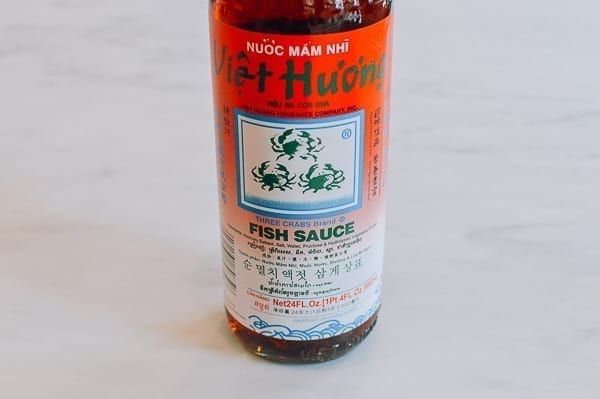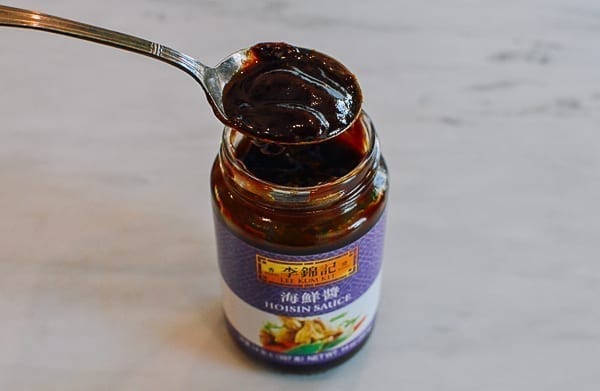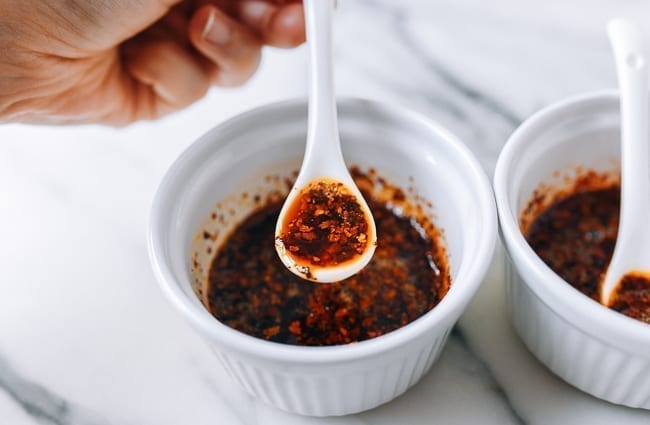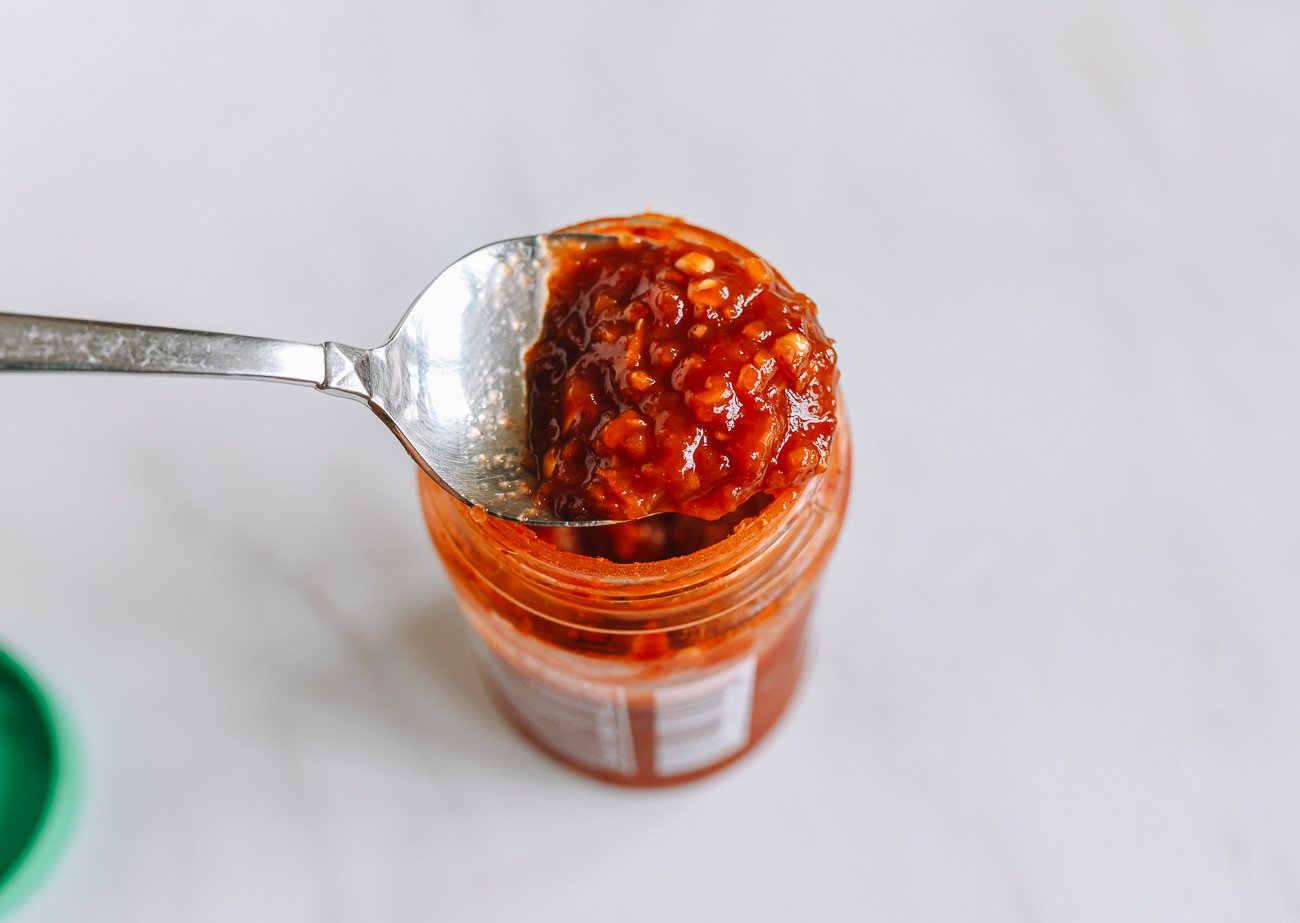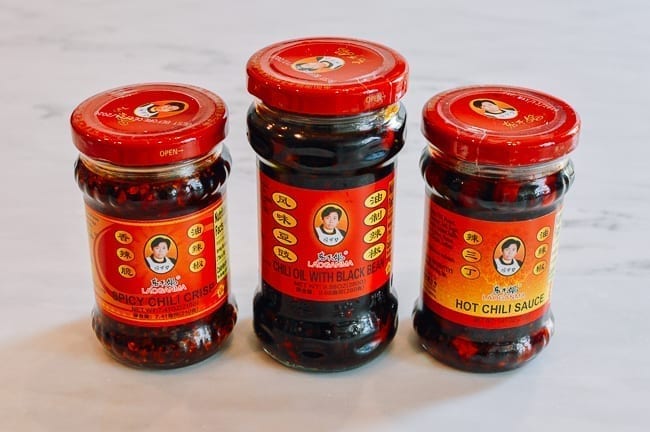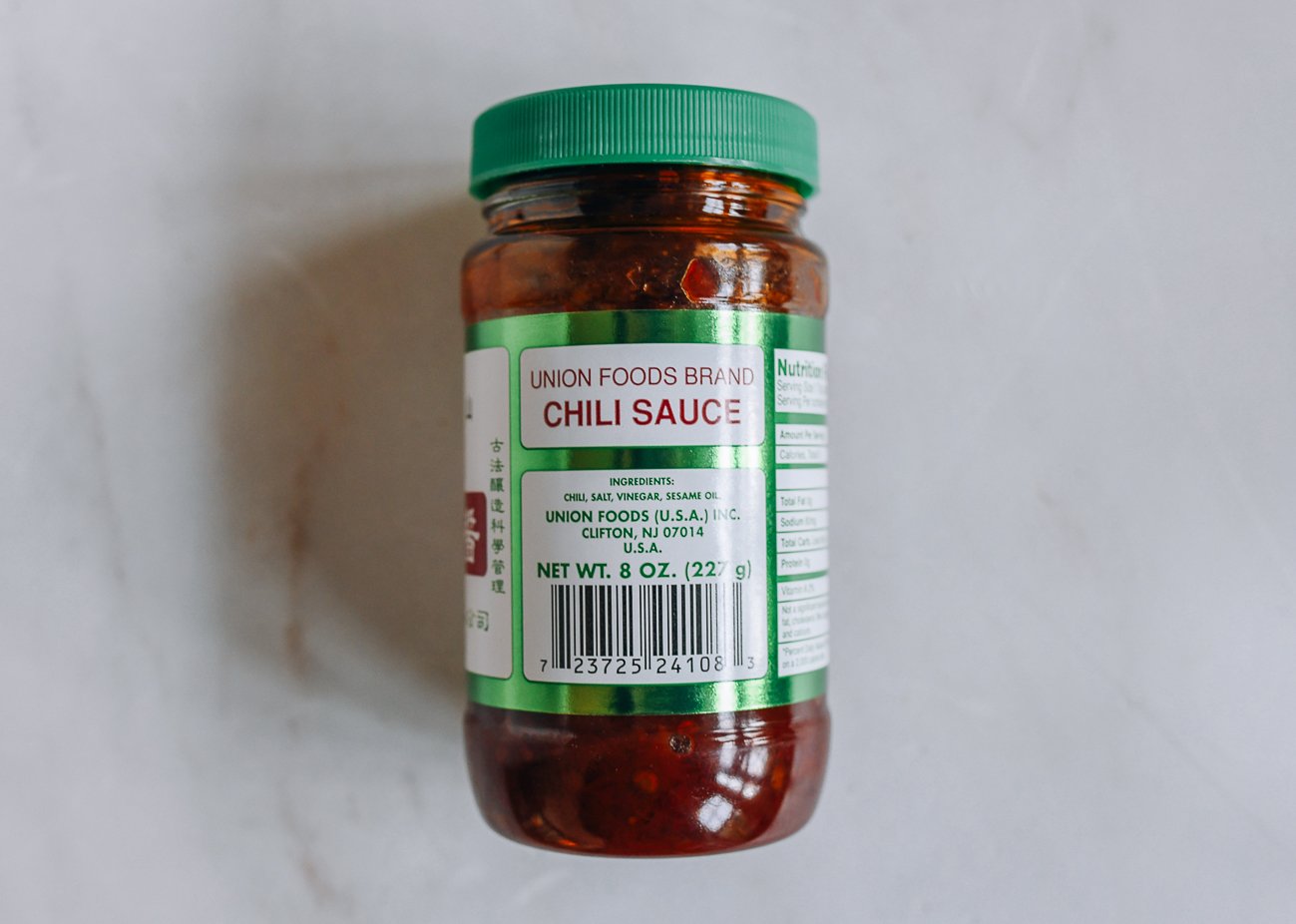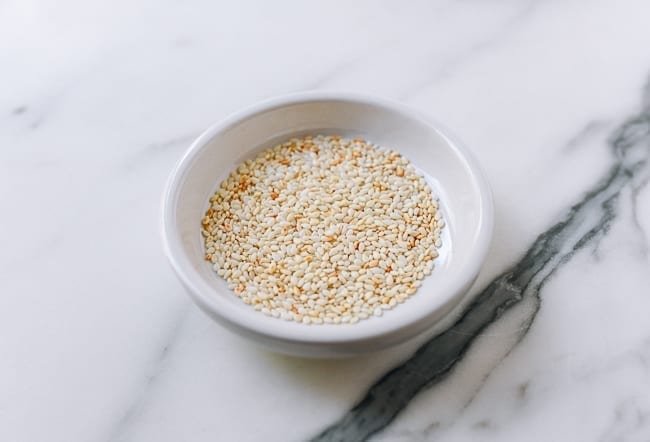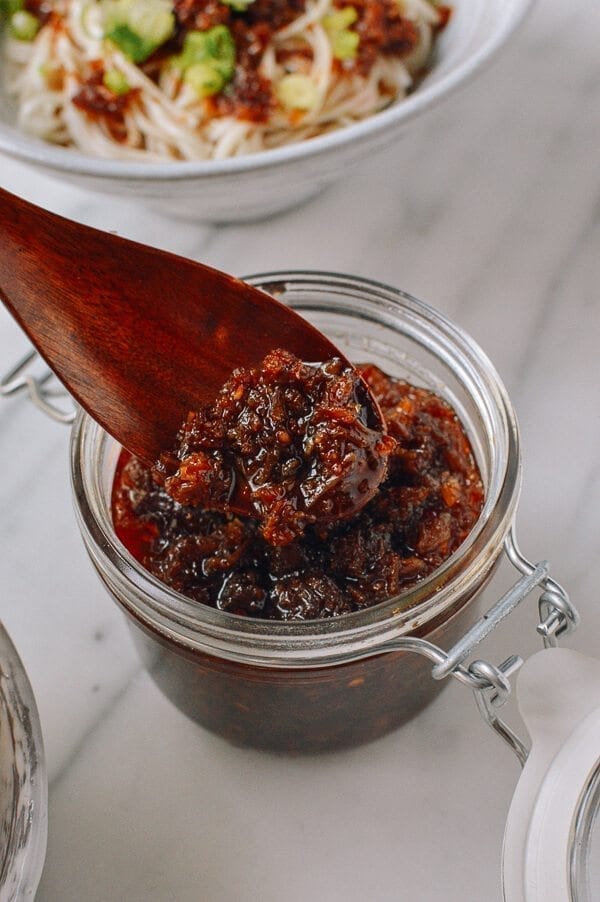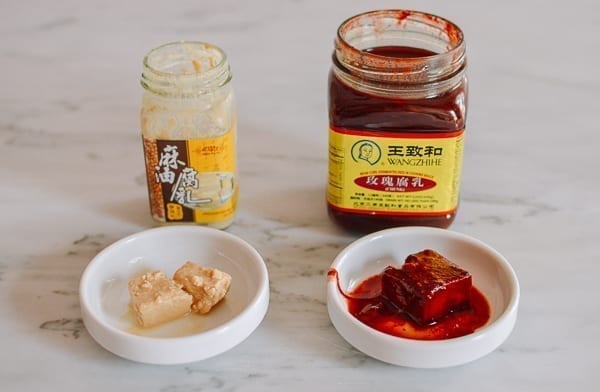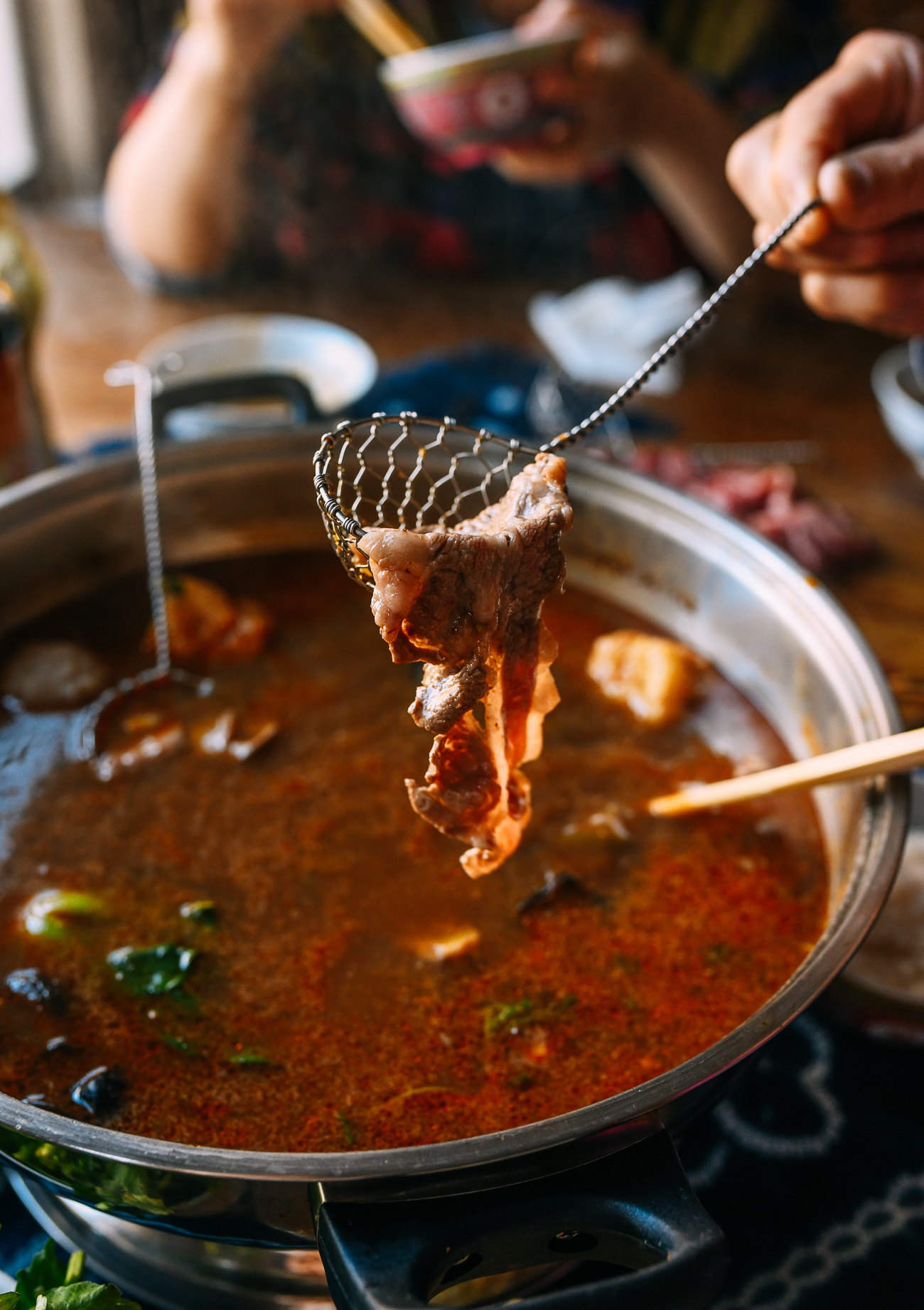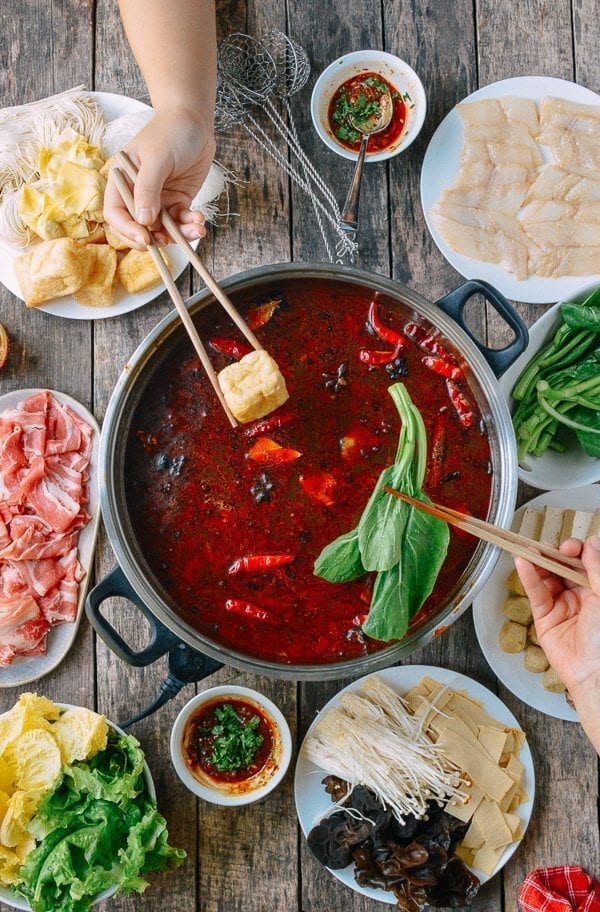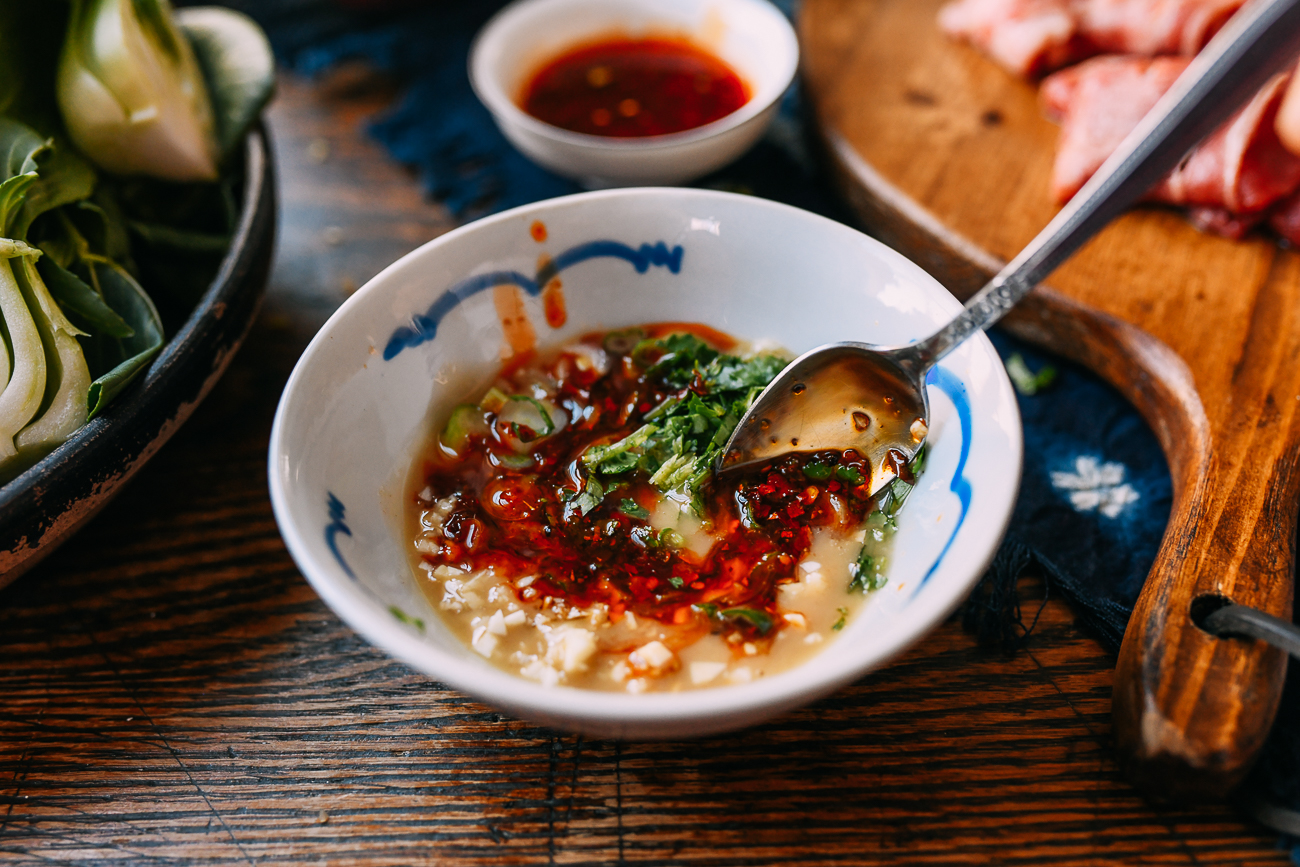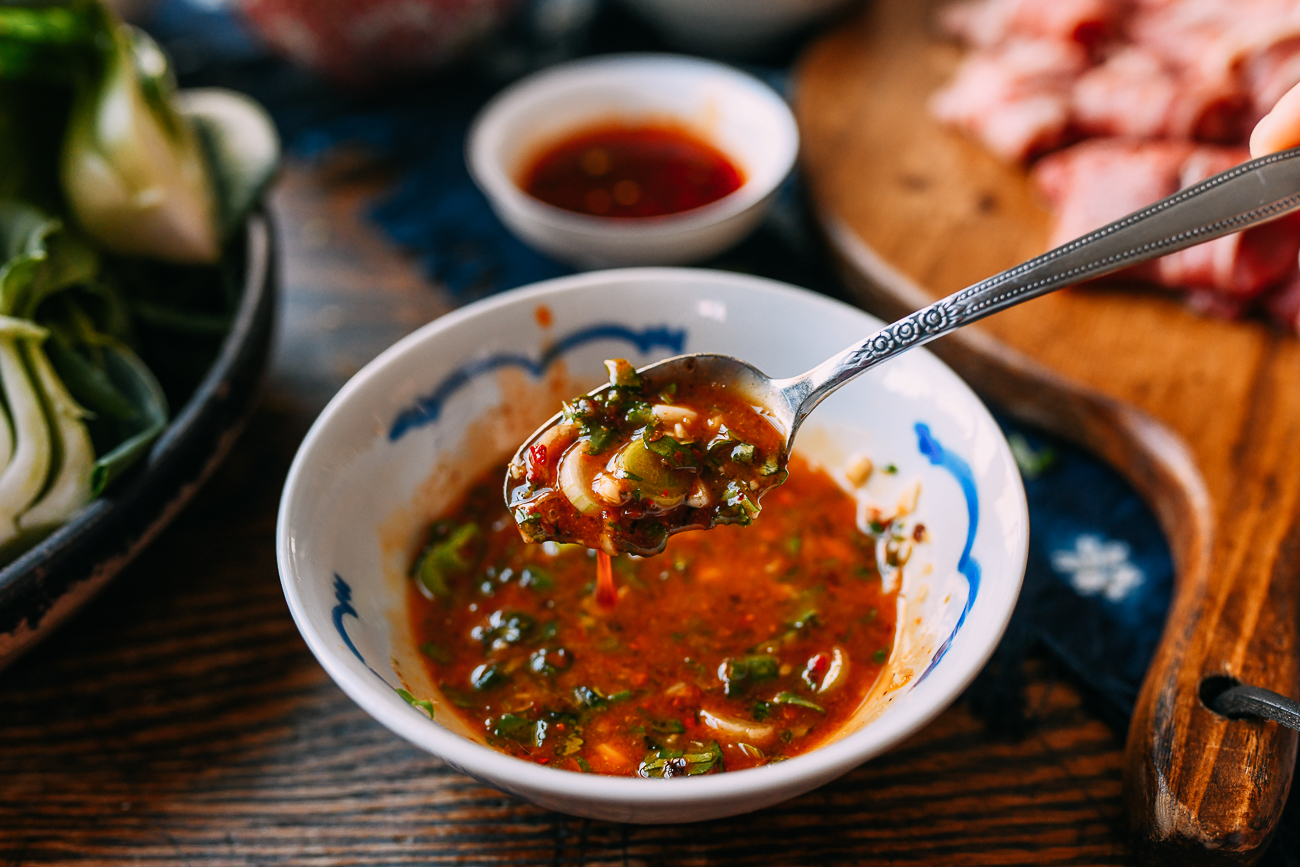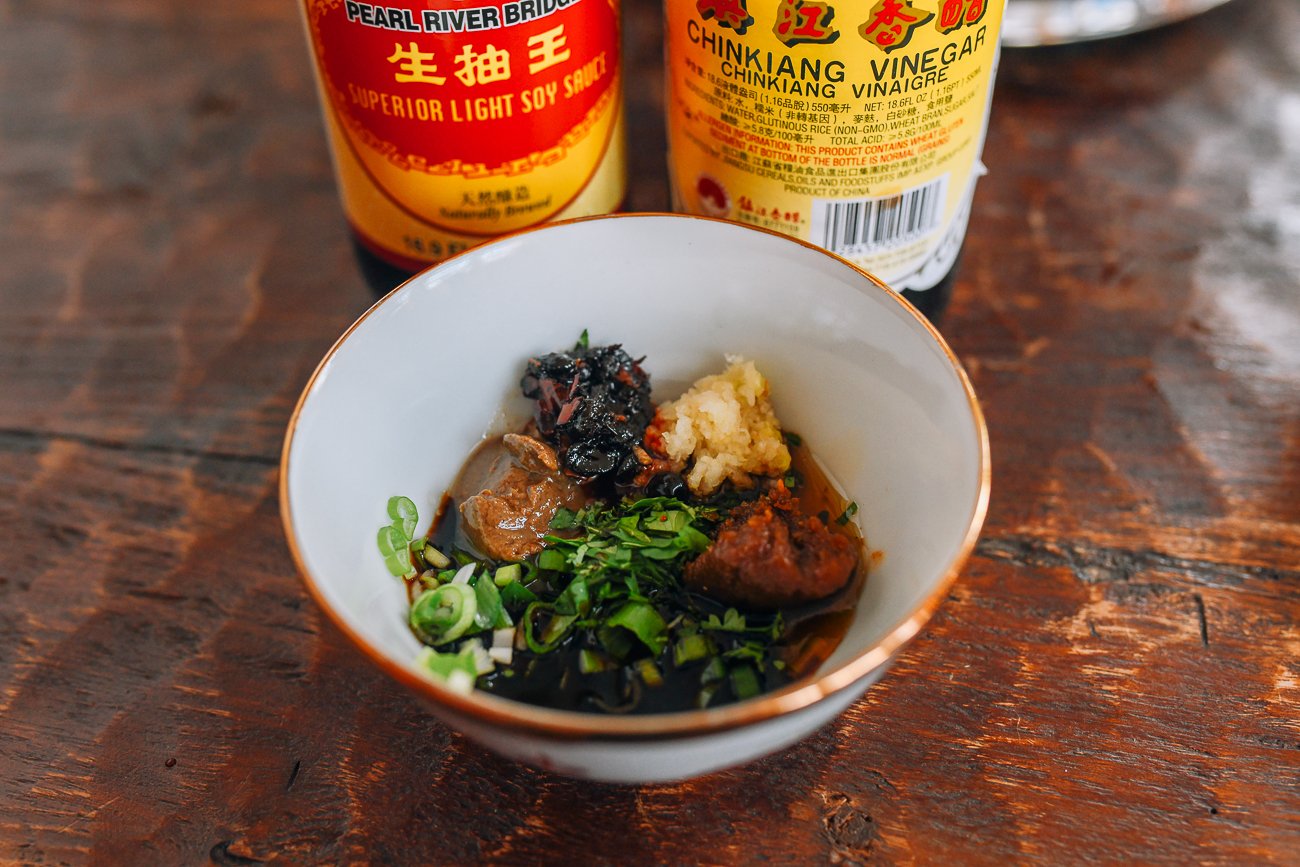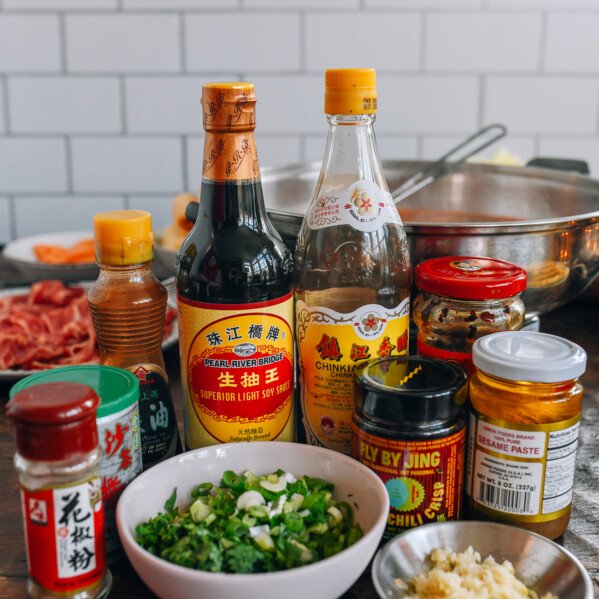More and more of you are loving hot pot, and we’ve gotten a lot of queries about how to prepare it at home. We have posts on how to set up a hot pot dinner, and how to make an easy tomato hot pot base or a spicy Sichuan hot pot. But what about the hot pot sauce that you mix up (usually at a big sauce bar at restaurants) to dip all the tasty morsels into? It’s a very personal thing, and assembling the right ingredients can be daunting. So today, we’re doing a full guide on hot pot sauce. We’ll talk about what ingredients you should put out at your own home sauce bar and provide each of our personal concoctions for hot pot sauces, so you can choose one that sounds tastiest to you and tweak from there to create your own. We hope this post inspires future at-home hot pot adventures!
Is HotPot Finally Sweeping the Nation?
If you’re unfamiliar with the concept, Chinese hot pot is a meal in which various ingredients (vegetables, mushrooms, meats, seafood, tofu, noodles, rice cakes, etc.) are cooked in a pot of bubbling soup in the center of the table. The soup pot can be communal or individual, and diners take the cooked ingredients out of the pot, and enjoy them with a dipping sauce. We’re not quite sure when it happened, but it seems that this type of meal has finally become trendy. Before I jumped ship from my day job (now, The Woks of Life is my day job!), my younger colleagues were proudly telling me that they’d recently eaten out at a hotpot restaurant. Who’d have thought that “going out for hot pot” would get bandied about as casually as going out for drinks? I know that we, along with plenty of other Chinese people in food, have been beating the hot pot drum for a long time, but it’s still nice when this stuff actually gets through to the mainstream! Perhaps it’s the availability of all-you-can-eat hotpot spots—the 2020s version of the old American Chinese buffet. Or perhaps it’s the personalized nature of it—you can choose your soup base (or go halfsies on both a spice and non-spicy broth), choose all the vegetables, proteins, noodles, etc. you want, and make your own individual on-the-spot hot pot sauce recipe from a plethora of available sauces and add-ins. It would seem that hot pot is here to stay!
Recreating the Hot Pot Sauce Bar
Perhaps the best part of going to these restaurants is the vast sauce bar for assembling your own unique concoctions for dipping and dunking. A rainbow of sauces, salty add-ins, and pungent herbs and garlic awaits. It may seem overwhelming to create such a thing at home, as these sauce bars often offer 20+ ingredients! That said, we’re going to break down all the options, and within those options, mark the must-have sauces at your at-home mini sauce bar. From there, you can see if any of the optional sauce bar ingredients sound interesting to you!
How to Make a Chinese Hot Pot Dipping Sauce
As with any DIY situation, there’s expectation…and there’s reality. Let’s just say that it can be easy for a hot pot dipping sauce to go awry when presented with all those choices without knowing how things taste! We have more on how to pull together a hot pot spread across a couple of posts now. See our guide to making Chinese Hot Pot at Home, recipes for hot pot bases like Sichuan Hot Pot, Tomato Hot Pot Soup Base, and a shortcut all-in-one Tomato Hot Pot with Beef. We’ve broken down a basic hotpot sauce recipe into 7 main components: We list individual ingredients under each category. Our must-haves are marked with an asterisk! If you have further questions about any ingredient, we’ve included links to our full ingredients glossary articles about buying, storing, and using that ingredient in other recipes. You can find all of these ingredients in Asian supermarkets, or online from Chinese eCommerce sites like those below:
CORE BASES
Chinese Sesame Paste (NOT tahini!) or Peanut Butter*
You might see it in a lighter shade at a hot pot restaurant, where folks eagerly ladle spoonfuls into their dipping sauces. That’s because it’s thinned out with hot water to give it more of a pourable, dippable consistency and a milder flavor. Chinese sesame paste is one of the most common core bases for hot pot dipping sauce. It gives your sauce a hearty thickness—and a satisfying coating to anything you dip into said sauce. We use it straight from the jar. A spoonful goes a long way! That said, if you’ve got it thinned out and ready to go for hot pot, it’s not a bad idea to add a few heaping tablespoons. You can buy jarred plain sesame paste, or sesame sauce, which usually has ingredients added to it (it’s more of a pre-made sauce designed for noodles and hot pot). You can even buy a sesame paste that has peanuts blended in for extra flavor. If you can’t find sesame paste, peanut butter is a great alternative. My dad actually prefers it!
ShaCha / Chinese BBQ Sauce*
The most famous brand is the Bullhead brand in the silver can with the red characters and the little cartoon bull. If you’re vegetarian or vegan, Bullhead also makes a vegan shacha sauce, which looks just like the regular version, but with a green lid!
SEASONING SAUCES
Light soy sauce*
You may think light soy sauce is a bit of a boring character in what I am now realizing is becoming an illustrious list of add-ins. However, it does a few simple things well: 1) thinning out the sauce, 2) adding salt, and 3) harmonizing all of the random things that you may have thrown in. You don’t need a lot!
Oyster sauce
This isn’t one that we often reach for in our house, but if you feel Sha Cha Sauce is a bit too fishy, oyster sauce makes a good substitute. It adds a ton of umami while having a well-rounded, sweet flavor and light hit of MSG that makes everything so darn tasty.
Sesame oil
Vinegar
Whether or not you want a bit of acidity or tang in your dipping sauce is a personal decision, so we didn’t include it in our list of must-haves. That said, for some people (Sarah’s husband Justin, for instance), it IS a must! Here are the various types of vinegar you can choose from.
Chinese black vinegar (such as Chinkiang/Zhenjiang or Baoning vinegar)Shanghai rice vinegar Rice wine vinegar
The vinegar you choose from the above list is a very personal thing. It depends on the flavor profile you’re looking for. Dark, malty, and bold? Go for the black vinegar. Zhenjiang/Chinkiang black vinegar is most common, but Baoning vinegar is a bit less acidic. Delicate and light? Shanghai rice vinegar is for you. Looking for acidity without too many secondary flavors? Go for rice wine vinegar (also known as simply, rice vinegar).
Fish sauce
Hoisin sauce
Though we don’t usually add it to our hot pot sauces, you can use it to add sweetness to your dipping sauce, or use it as a vegan source of umami if you’d rather not use a seafood-based sauce like Shacha, Oyster, or Fish Sauce.
SPICY INGREDIENTS
Chili oil*
Chili garlic sauce / Sriracha
Other chili sauces (e.g., Chili crisp, Lao gan ma chili oil with black bean)
I say chili sauces to set this apart from basic chili oil. This category is for your chili crisps, your fermented beans, etc.—in other words, your chili oil plus. You’ll want to be careful of salt levels with these. Keep in mind, you can always add more but ya can’t take away!
Chopped chili peppers
We’ll talk more about this in the Fresh Ingredients section, below!
FRESH INGREDIENTS
Minced garlic*
I think my favorite part of eating hot pot at a restaurant is minced and chopped herbs and aromatics laid out before me to enjoy. The one I relish the most, however, is the garlic. I can heap it into my bowl without having garlic skins clinging to my sticky fingers or waking up the next day and realizing my hands STILL smell like garlic.
Chopped scallions*
No one ever went wrong by adding some chopped scallions into the mix. If you haven’t caught on by now, strong flavors are the name of the game. The hot pot sauce trinity is garlic, scallion, and the next ingredient, cilantro.
Chopped cilantro*
When we don’t have any cilantro for hot pot, there’s a collective “awww…” before we can move on with the meal. Minced cilantro—don’t leave out the stems!—adds a freshness and crunch, somehow mellowing out even the most harebrained of sauce combinations! If you think cilantro tastes like soap, you can stick to just the garlic and scallions.
Chopped red or green chilies
If you didn’t get enough heat with the chili oils and sauces, you can add a little bit of finely chopped chilies to your sauce for extra heat. Be careful with super hot chilies, however! In China, we’ve seen cooks cut open a super hot chili and just swish it around in the sauce for heat—adding it directly to the sauce would be too spicy!
NUTS / SEEDS
Roasted chopped peanuts
If you like added nuttiness to your dipping sauce, or perhaps just some extra crunch, chopped peanuts are a bonus that you sometimes see at hot pot sauce bars.
Whole fried soybeans
An alternative to peanuts, especially if you have an allergy in your dining group, is whole fried soybeans. Salty, buttery, and crunchy, these add an extra textural element to your sauce.
Toasted sesame seeds
Sesame seeds can add a light nuttiness to your dipping sauce without changing the texture as much as the chopped peanuts or fried soybeans.
SPECIALTY INGREDIENTS
Leek flower sauce
Leek flower sauce is made from the white flowers of garlic chives. They’re pulverized into a paste and fermented to make this pungent sauce with a garlicky, onion-y flavor. This is a mainstay of hot pot dipping sauces in Northern China, where it’s often paired with lamb. A classic combination is lots of sesame paste and leek flower sauce, maybe with some sugar to taste. One of the better known brands is Wangzhihe. We enjoyed this video of farmers in Inner Mongolia making a homemade leek flower sauce!
XO Sauce ($$$)
Fermented bean curd
It does have a cheesy kind of flavor that is truly epic when cooked. You can add a little chonk of this into your hot pot dipping sauce—either red or white work well!
SPICES
White pepper
A little bit of white pepper is great for those who don’t enjoy spice, but want to give their dipping sauce a bit more dimension. It gives that little kick that makes it a default ingredient in so many Chinese recipes.
Sichuan peppercorn powder
This is a fun addition, especially if you’re a lover of Sichuan hot pot, but maybe the rest of your dining companions aren’t, and you’ve been stuck with a milder hot pot soup base. A sprinkling in your dipping sauce will give every bite that signature tingle on your tongue.
Sugar
This is a big one that I am a bit embarrassed to say I didn’t realize was a thing until I started watching hot pot sauce videos on youtube to research this post. That said, I see why—just like in any of our stir-fry recipes, a pinch of sugar in a dipping sauce brings out the flavors, especially when you’re heaping one salty element on top of another.
MSG
If you so choose, a very small pinch of MSG will give you the zazazu you may be wanting. However, it’s worth noting that a good number of the aforementioned sauces will already have MSG—either naturally occurring or added—and it’s probably not necessary. (But hey, one of you ingenious readers thought to add a little MSG to our recently shared buffalo wings recipe, which is totally brilliant—so let the wind take you where it may.)
Our 5 Personal Hot Pot Sauce Recipes
You may be wondering what our personal combinations are! We’re all creatures of habit, though this post has inspired me for one to branch out of my normal dipping sauce protocols. You don’t have to be super precise with the measurements we give below. Do what feels right to you, and taste a little with your mixing spoon as you go along! Hopefully this gives you a starting point to discover your own beloved flavor combinations!
My (Kaitlin) Hot Pot Dipping Sauce:
After waxing on and on about hot pot sauces, I’m now a little insecure that my personal formula sounds a little prosaic. I like a dollop of sha cha, a spoonful of Chinese sesame paste, a couple drizzles of soy sauce, a small drizzle of sesame oil, a dash white pepper, a couple spoonfuls of my homemade chili oil, lots and lots and lots of garlic, lots and lots of cilantro, and lots of scallions. Hot pot dinners are usually the only time I eat sha cha, so I like to savor the flavor, which brings the nostalgia of long and leisurely family hot pot nights’ past.
1 tbsp sha cha 2 tsp sesame paste 1 tsp light soy sauce1 tsp chili oil 1/4 tsp sesame oil 1 pinch white pepper1 tbsp minced garlic2 tbsp cilantro 2 tbsp chopped scallion
My Dad’s (Bill’s) Hot Pot Dipping Sauce
For a long time, my dad simply scavenged a bowl of sauce from me, swiping my sauce as soon as it was done! Such is our duty to our parents, I suppose! These days, he prefers a little peanut butter instead of the sesame paste I use. He goes light on the chili oil, and just as heavy on the garlic, scallion and cilantro!
1 tbsp sha cha 2 tsp peanut butter2 tsp light soy sauce1 tsp chili oil 1/4 tsp sesame oil 1 tbsp minced garlic2 tbsp chopped cilantro 2 tbsp chopped scallion
My Mom’s (Judy’s) Hot Pot Dipping Sauce
My mom, in typical Shanghai fashion, relies on soy sauce as her key ingredient and probably has the most restraint on the quantity of sauce that she makes. She adds:
1 tbsp light soy sauce 1 tsp chili oil (heavy on the flakes, light on oil)1 tsp Sha Cha sauce1/2 tsp sesame oil1 tsp minced garlic1 tbsp chopped cilantro1 tbsp chopped scallions
My Sister’s (Sarah’s) Hot Pot Dipping Sauce
Sarah’s sauce is heavy on the sesame paste—it’s thicker and richer than some of these other hot pot dipping sauce recipes! She’s also a sauce fiend, so her recipe makes a relatively large quantity!
2 1/2 tbsp sesame paste1 tbsp Sha Cha sauce1 tsp soy sauce 1 tsp oyster sauce1 tsp chili oil 1 tbsp minced garlic 1 tbsp chopped cilantro 1 tbsp chopped scallions1 tsp sesame seeds (optional)
My Bro-in-Law’s (Justin’s) Hot Pot Dipping Sauce
Sarah’s husband Justin loves black vinegar so much that he uses it as a base! From there, he adds a splash of soy sauce, a small amount of sesame oil, and sha cha sauce or XO sauce, and a generous helping of garlic and scallions.
1 tbsp Chinese black vinegar2 tsp light soy sauce1/2 tsp Sha Cha sauce1/2 tsp sesame paste1/4 tsp sesame oil1 tablespoon minced garlic1 tablespoon chopped scallion1 tablespoon chopped cilantro
There you have it! If you’re not sure where to start, there’s no need to choose just one. Make a few versions and try them all. Or you can make the version in the recipe card below, which is a mix of all our approaches! All this sauce talk making you hungry, but not enough ingredients to make hot pot? Try our recipe for Hot Pot Sauce noodles!
